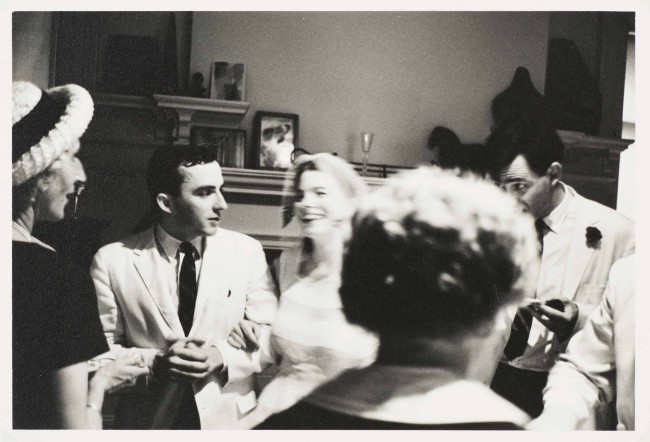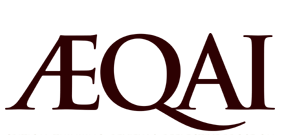Unknown Elements is this strange passage of time. Walking into the quaint exhibition space is as if walking into a long lost living room. Images of family members grace the walls, ranging from a war-time portrait of your heroic uncle to your mother’s failed attempt at documenting your annual vacation out West; from monochromatic flash photography, to dismal tintypes of your ancestors from across-the-sea. Unique to this family anthology is the mystery behind each image, the story behind the photograph, the place it was taken, or even the name of the person in the photo, lost or forgotten (or maybe was never even known). The premise of the show depends on this sort of historical hole, one that viewers are prompted to fill with their own imaginations. A simple concept, nonetheless, this exhibition entertains age-old queries about artist/audience relationship, photography as means of recording and archiving, and self as it pertains to life and legacy.
On: Knowledge and Aesthetics

James Karales, Rendville, OH, 1956, gelatin silver print. Museum Purchase: FotoFocus Art Purchase Fund and Thomas R. Schiff Photography Gift Fund. 2014.9. © The Estate of James Karales
While I could provide a fairly robust synopsis about this photograph (what I researched through Google and other online databases afterward) there is something remarkably indescribable about this image. While the identity of the subject or the particular context in which the photo was taken may be initially unknown, James Karales’ photo carries with it a profound sense of time and place and meaning. It possesses a palpable familiarity that makes us believe we know this photo, we know the man, we know the story. Our sense of knowing comes from our exposure to other historical imagery, ones we have seen reiterated throughout our time, in newspapers, television, books, and the like. These very icons have created this sort of visual American tapestry through which we know history, and, are what we draw upon to make a connection between the unknown and the known. Our sense of understanding comes from what is achieved through the aesthetic qualities of the image. So while I am no art historian, I can understand the photograph through my innate sense of human connectivity. It is amazing, really, how we are both confined to the pictorial framework established for us, while at the same time, empowered to devise our own.
On: Outer Space and Measurable Failure
Integral to the concept of the show is the involvement of local creatives beckoned to lend their inventiveness to the meaning of the exhibition. Writers from academic, artistic, and formal backgrounds are asked to explain a chosen photograph through narrative, poem, or any writing of the like. These pairings serve as the conduit for understanding the photograph, giving names to faces and location to places. Sarah Rose Nordgen illustrates it best in Simulation, her written accompaniment to Simulated Moon Landing Seen on Box Television Set (and from which the following quotes have been cited).

Unidentified Artist, [Simulated Moon Landing Seen on Box Television Set], November 1969, gelatin silver print. Cincinnati Art Museum, Gift of Peter J. Cohen. 14/15:80.7
Most notable of Nordgen’s writing is its perfect resemblance to the very concept of the exhibition. As viewers are encouraged to “unleash their imagination” (from CAM press release) the result elicits this strange relationship between the images and our very selves. We see in these photographs moments of greatness that we never achieved, and people of grandeur that we could never be. We project our own worn fantasies onto what are probably ordinary people just like ourselves. “Reassuring and paternal at his desk, Cronkite pulls you in, ‘Because if we are not able to land’ – he must be addressing you now – ‘at least we are able to follow.’”
On: Marriage and Immortality
There was something altogether lovely and sad about the show but I couldn’t quite put my finger on it until I reached this photograph by Walker Evans.

Walker Evans, [Unidentified Wedding Party], 1960s, gelatin silver print. Gift of Clark and Joan Worswick. 2008.145. © Walker Evans
What leaks through history is our very reality. Our stories of ambiguity, of love, of struggle are no less true than if anyone knew them to be. Nor can we make our lives anymore lasting through keeping, through recording, through preserving, through prayer. Saint Augustine of Hippo notes in Confessions, an eloquent compilation of reflection and redemption:
“I was sad, but sad is every soul overcome by love for what must pass.”
Find your place in history at the Cincinnati Art Museum through November 8, 2015.
–Hannah Leow




September 22nd, 2015at 10:54 am(#)
You say “Photography’s promise to preserve and our hope that it will do so will only be met with time, futility, and misinformation, as seen in this exhibition.”
Our humanity longs for eternity, and our soul knows there is more.
“The grass withers, and the flower fades….”